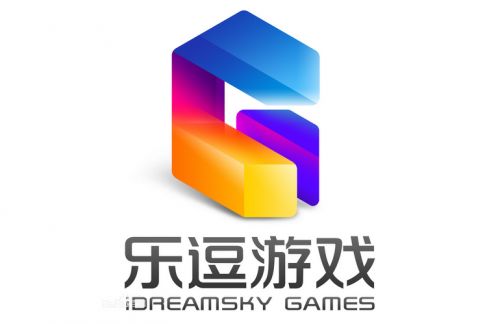4 Ways to enter the Chinese Mobile Games Market
There are three central mobile markets in the world today: Japan, the USA and China. About how you can get to the last one, – App2Top.ru Yulia Nabieva told me.

China is the leader of the mobile games industry, one of the largest markets, which will reach $5.5 billion dollars by the end of 2015, according to a report by the analytical agency Niko. Thus, for the first time, the Chinese market will outstrip the US mobile market in terms of money.
There are also more than 800 million active mobile device users in China today, and their number continues to grow. However, the number of mobile applications in local stores does not keep up with the growth rate of demand: now their number is just over 100,000 applications for all distribution sites, which is much lower than the volume of applications in the Apple App Store and Google Play.
And now let’s see what distribution options there are in the Chinese market, and what you should pay special attention to if you want to adapt your product for this market.
Option 1: Game Publishers
As can be seen from the statistics we cited above, the resource of local Chinese players is limited, which is why local game publishers have started actively searching for content in other markets.
As partners, you can choose the largest game developers and publishers in China, such as iDreamSky, CocoaChina/Chukong Technologies, OurPalm and LineKong.

Published by Subway Surfers and Temple Run 2
Advantages:
These companies will ensure not only the publication of your application in stores, but also guarantee promotional support for your product, since they use their own traffic to bring new products to market and have key connections on the most popular sites. As a rule, they also give advances for the completion of games for the market and are ready to buy a license with exclusive distribution rights in the region.
Pitfalls:
Game publishers from this cohort demand serious changes in the product, sometimes equated to the development of a new product. There is a big risk that the product will not be able to be adapted as deeply as the partner wants and as a result will not be published. They also charge a high percentage of the income for distribution: from 70% after deducting the commissions of sales stores.
Option 2: Agencies with a publishing house
Over the past few years, a large number of agencies have appeared that will take your game for distribution if the evaluation team finds the product suitable for the market. The main difference between agencies and large publishers is that they primarily sell their distribution services, mediation, sometimes work for a percentage of sales, providing services for free. But the reserve of companies is limited, they do not have their own financial cushion for advertising campaigns, promotion is reduced to features on sites that they receive through personal connections. You can purchase services from agencies separately: localization, user support, and so on. It is worth paying attention to such agencies as WizQ, Smartions and Yodo1.

Published by Crossy Road and Kings Bounty: Legends
Advantages:
WeChat Facebook will provide integration with social platforms (Tencent WeChat, an analogue of Facebook in China, and Sina Weibo, a local Twitter). You will not be able to do this yourself, because the platforms provide an API for user authorization only to companies registered in China. The agencies will also prepare payment SDKs for the main sales stores (as a rule, these are operator billing), and will place them in the TOP-10 local Android stores.
Pitfalls:
Agencies work on the stream, so if the game does not immediately take off, most likely it will stop being supported, or you will have to support the game yourself, but still pay a percentage for distribution under the contract.
Option 3: Automatic publishing platforms
In China, services for automatic placement of applications in local Android stores have been developed specifically for foreign companies. Let’s look at them in more detail.
The mechanism of the services is quite simple: the developer registers in the system, downloads payment SDKs with instructions, embeds and downloads game builds through the management console. Then the games are moderated and placed in the stores automatically, where the chances of all applications hosted in such ways are equal. The largest of these services are AppTutti and Kii China.

Hot Wheels Showdown Publishers
Advantages:
The entry threshold is low, there is practically no selection at the start of these sites. If the game shows a good result, it is possible to get a promo from the service. The sites charge the lowest percentage for mediation after the fees of the stores, sometimes a fixed cost for additional services and maintenance of your application card.
Pitfalls:
Insufficient promo of the application, but if it took off, then the companies will provide marketing campaigns, receiving a percentage of sales.
Option 4: Independent entry into the market
The easiest thing you can (and should) start with is to release the game in the Apple App Store in China. China’s share of revenue from Apple App Store app sales is at least $2.3 billion dollars and continues to grow (data from the analytical company Talking Data). According to the CEO of WizQ Interactive, Marcus Kay, the ARPU for iOS games in China is currently $1.2-1.5 and this is its starting point, whereas for Android the established average ARPU value is $0.7-0.9.

China’s Top Grossing App Store Games
Advantages:
The release in the App Store gives transparency and full control. You share a percentage of sales only with the App Store.
Pitfalls:
The only thing you need to take care of is a good localization and ASO for the game, made by a specialized agency in China.
Android stands apart. The Android application market is very fragmented, although there is a trend of absorption of distribution sites by each other. Of all the Android platforms, you should pay attention to Tencent’s MyApp store (currently the store provides 180 million installations per day), Qihoo 360 Mobile Assistant, Xiaomi store, Baidu’s Mobile Assistant and Wandoujia (the only store independent of the technology platform).
Advantages:
The largest coverage of mobile users in China.
Pitfalls:
As you can see, the leading stores belong to the technology giants of the industry and it is important to note that they skillfully compete with each other. Baidu search displays the results of search queries for applications only from its store, Xiaomi distributes its store as pre-installed on all devices of the line and actually blocks the installation of content on Xiaomi devices in a different wrapper, so it is important to place the game on the 5 sites listed above. Google Play, after 5 years of silence, has also begun its journey to China, which will take time, and Google will have to solve many issues: from local billing to the distribution of the site in the region.
What kind of games are needed. Tips on genres, marketing and market entry strategies from local players
Donald Tang, CEO of AppTUTTi

Donald Tang
The influx of applications to the market is really limited and cannot meet the needs of such a huge market. There is an urgent need for more applications that would eliminate this lack of content.
Therefore, we believe that any new, interesting and high-quality gaming applications will have a huge space for growth in the Chinese market. Most employees spend 2-3 hours a day commuting to work. We think it would be very nice to have such a casual game with a singleplayer mode that would help pass the time on the road from work to home.
On the other hand, developers need to be careful: some types of applications are banned in China, such as pornographic games containing scenes of violence, harassment, aggressive statements that violate the rights to someone else’s intellectual property, gambling, and so on.
Another aspect that needs to be paid attention to is the gameplay barrier. To encourage downloads, almost all apps in China are made free. Accordingly, most of the revenue comes from in-game purchases. However, the game should not be too difficult because the local market is still young. Most Chinese mobile users have not yet mastered gaming applications. A very complex application will eventually only cause a significant outflow of players. An understandable GIU can help here.
Marcus Kay, CEO of WizQ Interactive

Marcus Kay
To begin with, let’s quickly go through the list of Western games that are popular in China:
- Strategies: Clash of Clans, Mobile Strike, Plague Inc.
- KKI: Hearthstone: Heroes of Warcraft
- Racing: Asphalt 8: Airborne, MMX Racing, Need for Speed;
- RPG: Dungeon Legends, Dungeon Hunter 5, Summoners War
- MOBA: Vainglory,
- Builders: Township, SimCity BuildIt
- Farms: Farm Away!, Hay Day, Sports: Score! Hero, My NBA 2K16
- Platformers: Give It Up!, Lep’s World, The Last Vikings
The list goes on and on. See what they all have in common? It’s not easy to find, is it? The point is that any game in any genre can succeed in China. Gameplay and graphics don’t matter either. If the game is good, then it will be a success in China, provided that the localization and marketing are competent.
***See? Both partners agreed that the Chinese market needs games of various genres, the individuality of games, quality, localization and proper marketing are important. On our own, we add that the channels prefer to take games no more than 100Mb, and 50Mb is better – because of the limitations of cellular networks: the larger the build, the fewer channels available for placement.
Montgomery Singman, vice president of business development at iDreamSky, also says that games need different genres, but the most important thing is to find the right publisher, choose market leaders and notes that it is easy enough to find an English-speaking partner.

Montgomery Singman
There are two different mobile gaming segments in China: hardcore/midcore/online games and casual/offline games. Each of these segments is different from each other, and most mobile companies focus only on one segment. In the hardcore segment, MMORPGs, card battles and action RPGs are in demand (best of all in a realistic setting). The style of Russian cartoons may or may not appeal to the Chinese user. The casual segment likes match-3 games, offline FPS, endless runners and puzzles. Take an example from successful cases, do not work with unverified publishers, it is also not necessary to deal with agencies. And it’s also easy to find publishers who speak English.
Donald Tang adds about marketing:
After the game appeared in the store, you need to take up marketing, which, according to most developers, can cost a pretty penny. However, even if you spend a million dollars, it does not guarantee the desired result. There are many examples of this. In most cases, the main reason for the fiasco was the poor quality of the games. Facebook, WeChat, and Google, and therefore we strongly recommend focusing on the development of high-quality games and integration with local services, such as local payment systems (payments to the phone through local operators), social networks (not Facebook, Google, and Twitter, but Weibo, QQ, and Wechat) and user tracking tools. High-quality applications that have all the necessary local features and publishing support will eventually become popular among users. A good example for Western developers is Talking Tom Cat.
Kay, in turn, distinguishes between two approaches to marketing – free and paid:
Both free and paid promotion methods are available in China.
- Free methods
I strongly recommend starting with a free promotion. WeChat Facebook (Chinese Facebook) and Sina Weibo (Chinese Twitter) are the most effective ways of such promotion: ASO and social media marketing on Tencent WeChat (Chinese Facebook) and Sina Weibo (Chinese Twitter). There are a huge number of tricks associated with their promotion. There are so many of them that you can write a book. The bottom line is that these are mandatory things if you want to promote the app in China. On the other hand, don’t waste time writing publications for review sites and press releases. Most players don’t read them today.
- Paid methods
After using the free tools and setting up the game, I recommend launching mobile advertising campaigns on Chinese advertising networks to stimulate downloads. Again, WeChat and Weibo are very good advertising networks, since their advertising campaigns are usually viral. Plus, Chinese developers have a habit of advertising their projects by paying Chinese celebrities or groups to post on their mini-blogs on Sina Weibo. This method is more expensive than banner advertising, but by now it is the most effective tool for obtaining high-quality installations.
In addition, we provide a list of the leading advertising networks in China, where you can always purchase traffic for your applications in addition to SMM promotion: DOMOB, GuangDianTong, FenSiTong. The advent of advertising campaign management consoles in English is not far off.
Instead of an afterword
The Chinese market is opening up more and more channels for distribution, and the communication barrier is getting smaller: managers responsible for choosing content speak English, and now you can work with sites directly. But it’s worth considering that for success in the region, you will at least need, firstly, competent localization of the game itself and packaging, and secondly, integration with local social platforms. A working strategy may be to launch distribution in the Apple App Store, which is considered premium in China with the highest percentage of paying players, then debug the mechanisms on this site, and then enter the Android market, giving only the Android version for distribution.
And remember, when showing the game to potential partners, it is important not to get lost in the reviews that the sites willingly give about themselves, but to look at the success of the distribution of games in your category. The companies we cite above have earned a positive reputation and we can safely go forward towards 800 million active players.
The article used materials provided by AppTUTTi, WizQ Interactive and iDreamSky Technology.